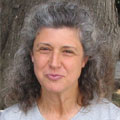Zooplankton Group Deck Operations : Biofish, Net Tows, & Sample Recovery
Of the four components on the ship, the Zooplankton group (B028) spends the most time on deck, utilizing three instruments deployed from the ship’s main deck on a daily basis. Zooplankton are small animals living in the ocean whose large-scale distributions are primarily controlled by currents. The instruments used to study their distributions consist of the biofish (below), and two nets of different sizes (2 meter by 2 meter and 1 meter by 1 meter fixed-framed nets).
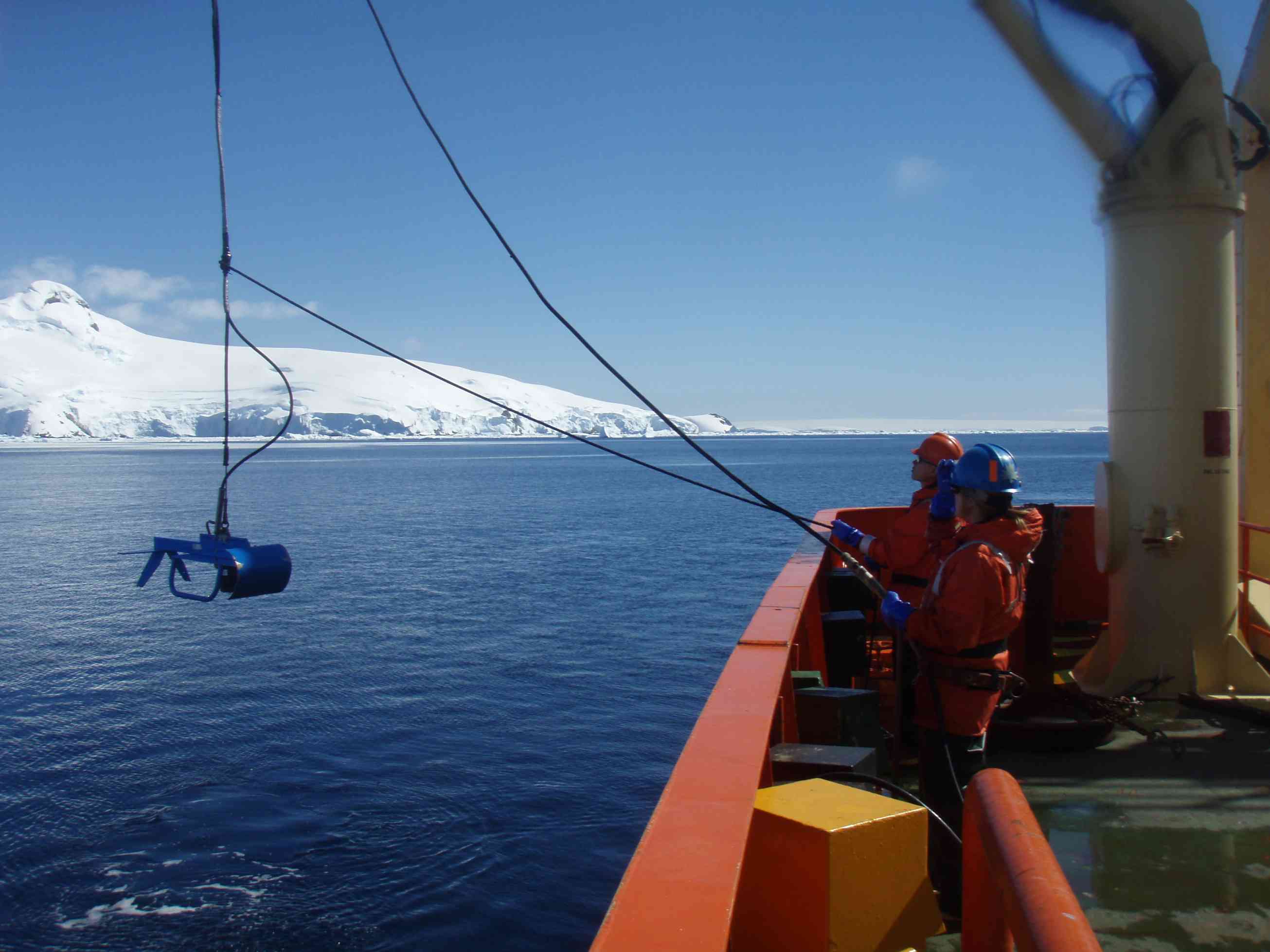
The biofish.
The biofish (above) is a blue fishlike device (hence the name) that has a transducer bolted to the body that sends data up the wire to a computer in the lab to record a bioacoustic transect. This instrument is essentially an echosounder device for zooplankton that helps us estimate the amount of zooplankton in the water column. The device also allows us to see at what depth the species that form layers or schools are in the water column, the size and density of the schools, and sometimes the species. The biofish is lowered into the water with a crane on the starboard quarter of the ship with two scientists to help ease it into the water. It then takes data throughout the entire tow to allow us to match what we see with the acoustics with what we catch in the nets.
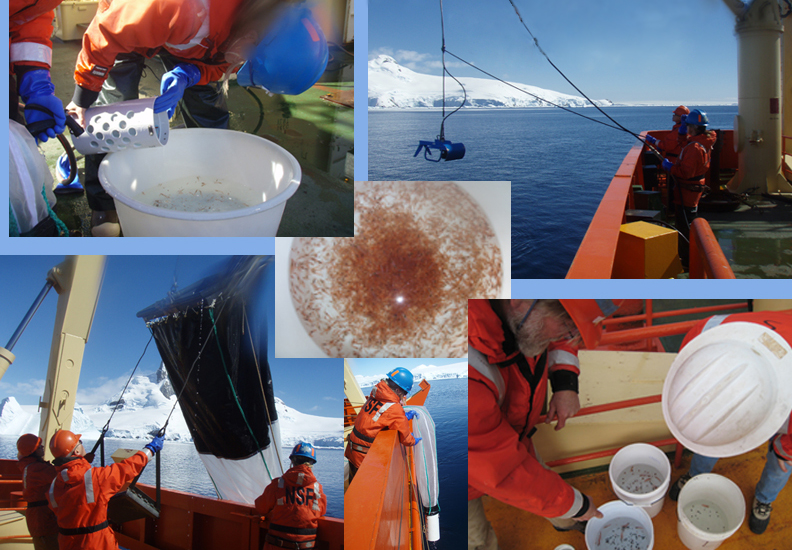
At upper right, Albert Kao and Whitney Wilkinson lower the biofish. At lower left, Meghan King, Albert, and Whitney lower the 1-m net into the water. At lower middle, Whitney pulls the cod onto the ship. At upper left, Whitney then pours the contents of the cod-end into a large white tub. At the lower right, Langdon Quetin and Robin Ross confer on the contents of a series of tows.
Everyone must have three things with them in order to work on the main deck. These items include 1) a hard hat, 2) a safety belt that attaches to a safety line that prevents you from falling overboard when the sea gates at the stern of the ship are open, and 3) a float coat (the orange jackets with NSF on the back) that helps you float if you fall overboard. These precautions are necessary because the sea gates at the stern must be opened in order to put the 2-m net in the water. In order to lift the 2-m net and get it into the water, a winch operator, with the help of a marine technician and two scientists, ease the net from its holder and guide it over the back of the ship. The 1-m net is put in the water in just the same way, but it is small enough that we do not need to open the sea gates (below).
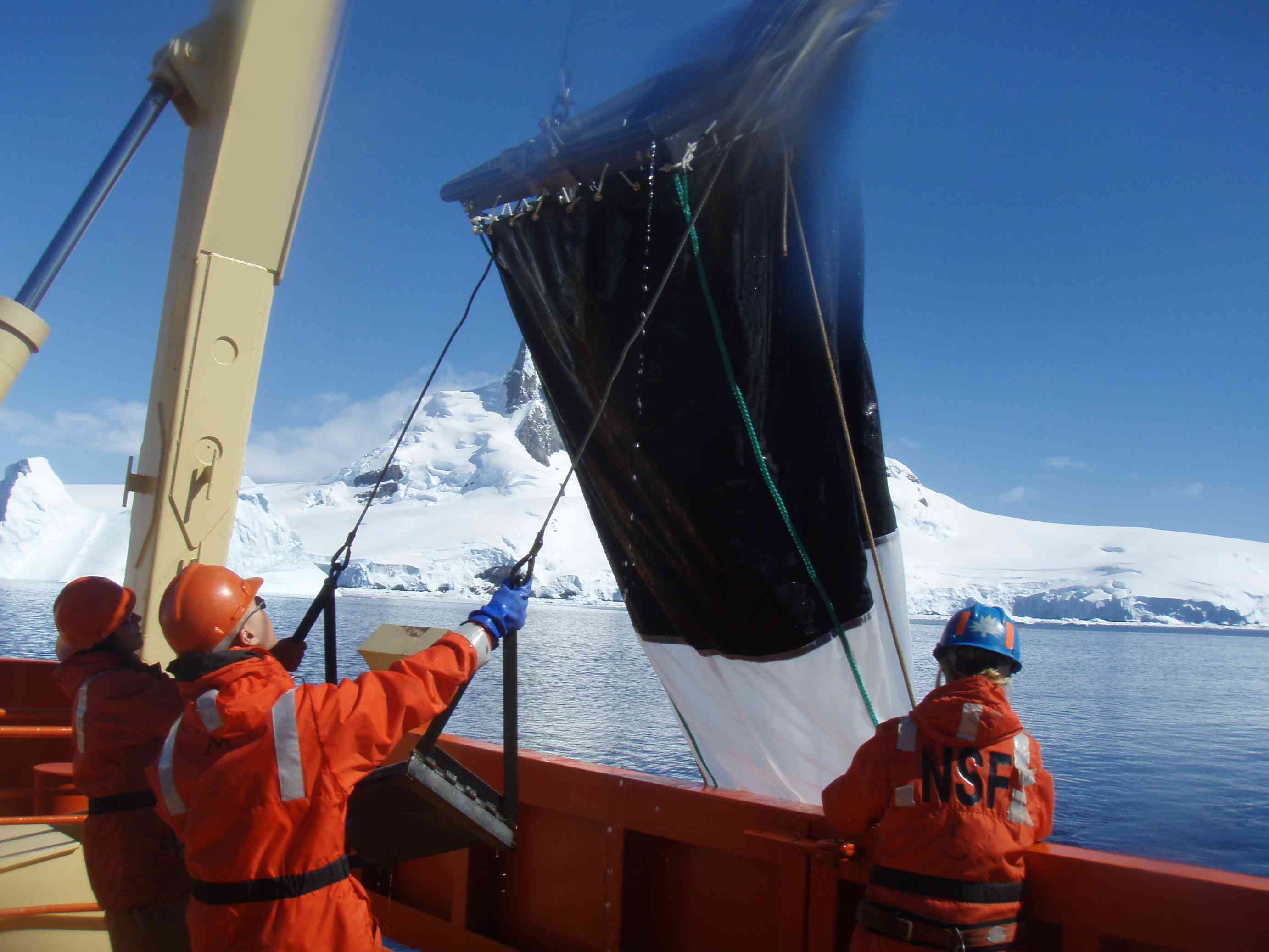
Deploying the 1-m net.
Once the net is brought up out of the water, the scientists quickly bring up the cod-end and place it in a tub of water—the cod-end is a cylindrical tube that is located at the back of the net and traps most of what passes through the net.
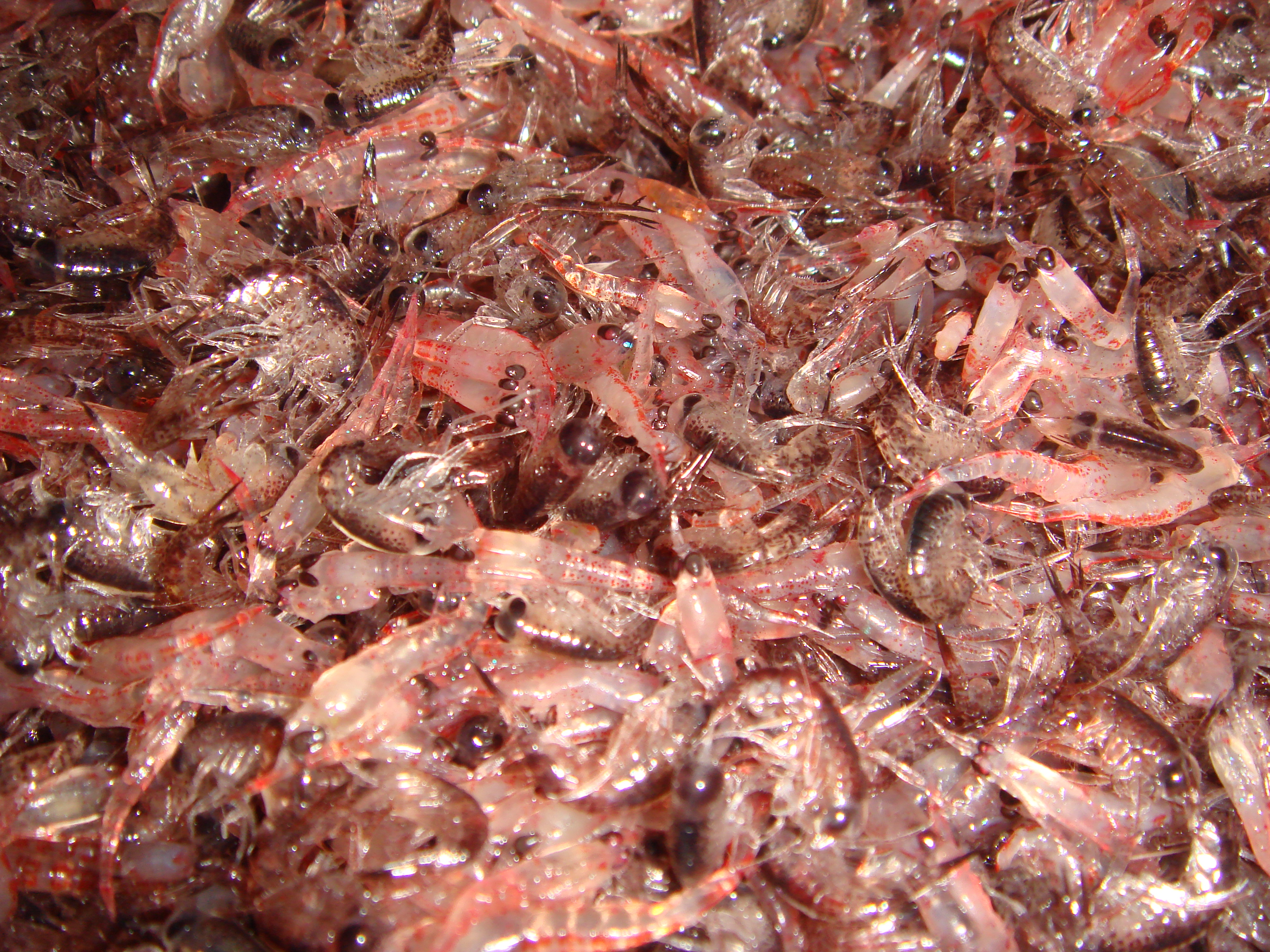 Antarctic krill.
Antarctic krill.Usually thousands of organisms are caught in one tow. Some of the common zooplankters we catch are three species of “krill” including Antarctic krill, the largest one here (above), salps (clear gelatinous filter feeders), many different species of worms, amphipods, copepods, marine snails called pteropods, as well as fish and their larvae.

 No comments
No comments 
